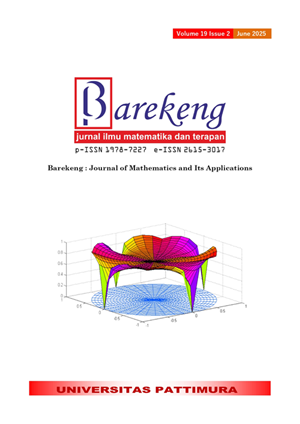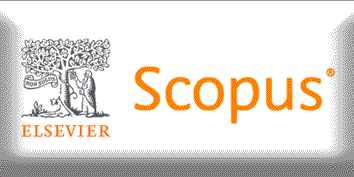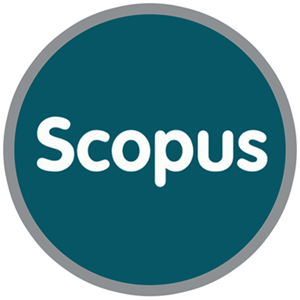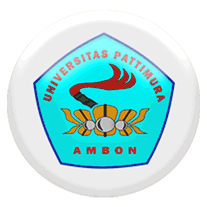THE IMPACT OF SOCIAL MEDIA MARKETING ACTIVITIES ON SKINTIFIC PRODUCTS: PLS-SEM APPROACH
Abstract
The swift expansion of the internet has markedly facilitated communication, thereby evolving social media from a tool for personal interaction into a formidable platform for product promotion. This research aims to investigate the effects of social media marketing endeavors on brand awareness, brand image, and brand loyalty about Skintific, a well-regarded skincare brand. Considering its growing significance, formulating a robust marketing strategy—especially within social media—is essential for enhancing brand visibility and cultivating customer loyalty. This study analyzes data from online questionnaires collected from June to July 2024 using Structural Equation Modeling (SEM) through Partial Least Squares (PLS). The sample for this investigation comprises 170 consumers of Skintific residing in Yogyakarta, with data gathered through questionnaires disseminated on platforms including Instagram, Twitter, LINE, and WhatsApp. The results indicate a positive and statistically significant correlation between social media marketing activities and brand metrics: awareness, image, and loyalty.
Downloads
References
K. Koesharijadi, A. A. A. Merthayasa, and I. Nendi, “DEVELOPMENT OF DIGITAL MARKETING STRATEGY AND SERVICE QUALITY USING SOCIAL MEDIA TOWARDS DIGITAL ECONOMY,” Journal of Social Science, vol. 3, no. 4, pp. 799–804, Jul. 2022, doi: 10.46799/jss.v3i4.375.
M. A. Alamer et al., “IMPACT OF SOCIAL MEDIA ON CHOOSING SKIN CARE AND COSMETIC PRODUCTS AMONG FEMALES IN SAUDI ARABIA,” Cureus, Dec. 2023, doi: 10.7759/cureus.49922.
Z. Zheng, “RESEARCH ON THE SOCIAL MEDIA MARKETING ACTIVITIES BASED ON LINEAR STATISTICS,” 2023, pp. 53–60. doi: 10.2991/978-94-6463-042-8_10.
N. Boonpreda and X. Ruan, “AN INVESTIGATION OF THE IMPACT OF SOCIAL MEDIA ON BUSINESS VALUE AND FINANCIAL PERFORMANCE OF ORGANIC SKIN CARE BRANDS IN THAILAND,” International Journal of Organizational Business Excellence, vol. 3, no. 2, pp. 49–64, Mar. 2021, doi: 10.21512/ijobex.v3i2.7124.
S. V. Jin, A. Muqaddam, and E. Ryu, “INSTAFAMOUS AND SOCIAL MEDIA INFLUENCER MARKETING,” Marketing Intelligence & Planning, vol. 37, no. 5, pp. 567–579, Jul. 2019, doi: 10.1108/MIP-09-2018-0375.
L. M. Andriany, “RELATIONAL RESPONSIBILITY TO BUYING DECISION: BUYER PERSPECTIVE IN BUSINESS OF CHINESE,” Journal of Accounting and Business Education, vol. 2, no. 2, Mar. 2018, doi: 10.26675/jabe.v2i2.11226.
M. C. O. Lordello et al., “CREATION AND VALIDATION OF THE SELF-ESTEEM/SELF-IMAGE FEMALE SEXUALITY (SESIFS) QUESTIONNAIRE,” Clin Med Insights Womens Health, vol. 7, p. CMWH.S19182, Jan. 2014, doi: 10.4137/CMWH.S19182.
Y. S. M. F. Jugessur, “RELIABILITY AND INTERNAL CONSISTENCY OF DATA: SIGNIFICANCE OF CALCULATING CRONBACH’S ALPHA COEFFICIENT IN EDUCATIONAL RESEARCH,” International Journal of Humanities and Social Science Invention (IJHSSI), vol. 11, no. 4, pp. 9–14, 2022.
S. Kumar and A. D. Kumar, “E-TRAINING IMPACT ON TRAINEE EXPERIENCE AND SELF-ASSESSMENT,” Journal of Workplace Learning, vol. 35, no. 7, pp. 599–612, Oct. 2023, doi: 10.1108/JWL-02-2022-0023.
A. Monecke and F. Leisch, “semPLS: STRUCTURAL EQUATION MODELING USING PARTIAL LEAST SQUARES,” J Stat Softw, vol. 48, no. 3, 2012, doi: 10.18637/jss.v048.i03.
N. N. Surayya and T. Sirait, “DETERMINANTS MODELING OF UNDERNUTRITION IN TODDLERS IN ACEH PROVINCE: A PLS-SEM APPROACH,” BAREKENG: Jurnal Ilmu Matematika dan Terapan, vol. 18, no. 3, pp. 1853–1864, Jul. 2024, doi: 10.30598/barekengvol18iss3pp1853-1864.
J. F. Hair, J. J. Risher, M. Sarstedt, and C. M. Ringle, “WHEN TO USE AND HOW TO REPORT THE RESULTS OF PLS-SEM,” European Business Review, vol. 31, no. 1, pp. 2–24, Jan. 2019, doi: 10.1108/EBR-11-2018-0203.
J. Mohammad, F. Quoquab, F. Idris, M. Al Jabari, and R. Wishah, “THE MEDIATING ROLE OF OVERALL FAIRNESS PERCEPTION: A STRUCTURAL EQUATION MODELLING ASSESSMENT,” Employee Relations: The International Journal, vol. 41, no. 3, pp. 614–636, Apr. 2019, doi: 10.1108/ER-10-2017-0243.
C. Fornell and F. L. Bookstein, “TWO STRUCTURAL EQUATION MODELS: LISREL AND PLS APPLIED TO CONSUMER EXIT-VOICE THEORY,” Journal of Marketing Research, vol. 19, no. 4, pp. 440–452, Nov. 1982, doi: 10.1177/002224378201900406.
A. Purwanto and R. Rusmining, “PLS-SEM ANALYSIS OF SOCIAL ENVIRONMENT’S IMPACT ON MATHEMATICS DIGITAL LITERACY,” BAREKENG: Jurnal Ilmu Matematika dan Terapan, vol. 18, no. 3, pp. 1527–1538, Jul. 2024, doi: 10.30598/barekengvol18iss3pp1527-1538.
M. F. Khalik, W. Mohammad, Z. Zilfana, and O. S. Themba, “THE INFLUENCE OF SERVICE PERSONALIZATION, CUSTOMER SATISFACTION, AND CUSTOMER RETENTION IN THE TELECOMMUNICATIONS INDUSTRY ON DATA-DRIVEN MARKETING,” West Science Information System and Technology, vol. 1, no. 02, pp. 55–62, Dec. 2023, doi: 10.58812/wsist.v1i02.476.
J. Lobo et al., “THE ROLE OF MOTIVATION TO DANCE ENGAGEMENT AND PSYCHOLOGICAL WELL-BEING,” American Journal of Youth and Women Empowerment, vol. 1, no. 1, pp. 22–29, Oct. 2022, doi: 10.54536/ajywe.v1i1.835.
A. Nabot, “INVESTIGATING THE EFFECT OF INFORMATION SYSTEMS AND DECISION QUALITY ON ORGANIZATIONAL PERFORMANCE IN BUSINESS FIRMS,” The Eurasia Proceedings of Science Technology Engineering and Mathematics, vol. 23, pp. 513–520, Oct. 2023, doi: 10.55549/epstem.1374912.
G. Cepeda-Carrion, J.-G. Cegarra-Navarro, and V. Cillo, “TIPS TO USE PARTIAL LEAST SQUARES STRUCTURAL EQUATION MODELLING (PLS-SEM) IN KNOWLEDGE MANAGEMENT,” Journal of Knowledge Management, vol. 23, no. 1, pp. 67–89, Jan. 2019, doi: 10.1108/JKM-05-2018-0322.
R. Calderon Jr., G. Kim, C. Ratsameemonthon, and S. Pupanead, “ASSESSING THE ADAPTATION OF A THAI VERSION OF THE RYFF SCALES OF PSYCHOLOGICAL WELL-BEING: A PLS-SEM APPROACH,” Psychology, vol. 11, no. 07, pp. 1037–1053, 2020, doi: 10.4236/psych.2020.117068.
A. Leguina, “A PRIMER ON PARTIAL LEAST SQUARES STRUCTURAL EQUATION MODELING (PLS-SEM),” International Journal of Research & Method in Education, vol. 38, no. 2, pp. 220–221, Apr. 2015, doi: 10.1080/1743727X.2015.1005806.
L. A. Prihandoko, R. Morganna, and S. Nugrah Amalia, “SELF-EFFICACY AND METACOGNITION AS THE MEDIATED EFFECTS OF GROWTH MINDSET ON ACADEMIC WRITING PERFORMANCE,” Journal of Language and Education, vol. 10, no. 2, pp. 108–122, Jun. 2024, doi: 10.17323/jle.2024.13979.
G. Shmueli et al., “PREDICTIVE MODEL ASSESSMENT IN PLS-SEM: GUIDELINES FOR USING PLSPREDICT,” Eur J Mark, vol. 53, no. 11, pp. 2322–2347, Nov. 2019, doi: 10.1108/EJM-02-2019-0189.
H. Hartati, I. Saluza, I. Iisnawati, and T. Teguh, “THE UTILIZATION OF STRUCTURAL EQUATION MODELLING TO DETERMINE CASUALITY ON CONSUMER DECISION OF E-WALLET,” BAREKENG: Jurnal Ilmu Matematika dan Terapan, vol. 18, no. 4, pp. 2113–2124, Oct. 2024, doi: 10.30598/barekengvol18iss4pp2113-2124.
Irwan and K. Adam, “METODE PARTIAL LEAST SQUARE (PLS) DAN TERAPANNYA (STUDI KASUS: ANALISIS KEPUASAN PELANGGAN TERHADAP LAYANAN PDAM UNIT CAMMING KAB. BONE),” Jurnal Teknosains, vol. 9, no. 1, pp. 53–68, 2015.
G. W. Cheung, H. D. Cooper-Thomas, R. S. Lau, and L. C. Wang, “REPORTING RELIABILITY, CONVERGENT AND DISCRIMINANT VALIDITY WITH STRUCTURAL EQUATION MODELING: A REVIEW AND BEST-PRACTICE RECOMMENDATIONS,” Asia Pacific Journal of Management, vol. 41, no. 2, pp. 745–783, Jun. 2024, doi: 10.1007/s10490-023-09871-y.
Copyright (c) 2025 Nanda Nasywa Afifah, Dina Tri Utari

This work is licensed under a Creative Commons Attribution-ShareAlike 4.0 International License.
Authors who publish with this Journal agree to the following terms:
- Author retain copyright and grant the journal right of first publication with the work simultaneously licensed under a creative commons attribution license that allow others to share the work within an acknowledgement of the work’s authorship and initial publication of this journal.
- Authors are able to enter into separate, additional contractual arrangement for the non-exclusive distribution of the journal’s published version of the work (e.g. acknowledgement of its initial publication in this journal).
- Authors are permitted and encouraged to post their work online (e.g. in institutional repositories or on their websites) prior to and during the submission process, as it can lead to productive exchanges, as well as earlier and greater citation of published works.






1.gif)



